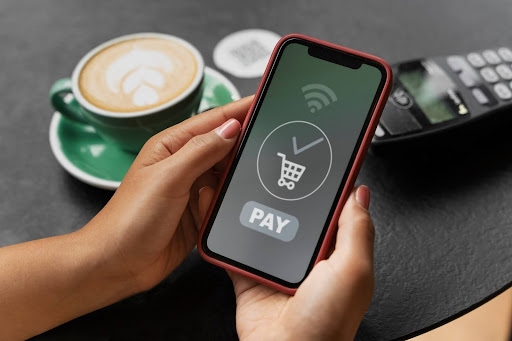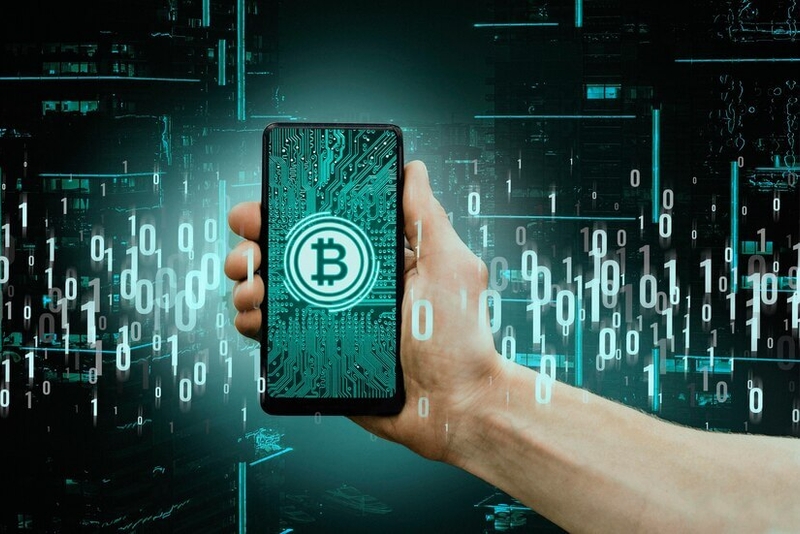

What Is an International Bank Account Number (IBAN)?
If you’ve ever sent or received money internationally, you’ve probably come across something called an IBAN. But what is an International Bank Account Number, and why is it so important?
VELLIS NEWS
11 Apr 2025
By Vellis Team
Vellis Team
Automate your expense tracking with our advanced tools. Categorize your expenditures
Related Articles

Vellis News
31 March 2025
Maximizing Security with a High Risk Payment Gateway for BigCommerce
High-risk industries often face significant challenges in securing reliable payment processing solutions. Traditional payment processors tend to avoid these sectors due to increased risks of chargebacks, fraud, and regulatory scrutiny. However, specialized high-risk payment gateways offer tailored solutions to meet the unique needs of these businesses, especially for platforms like BigCommerce and WooCommerce.

Vellis News
31 March 2025
Unveiling the Criteria for Identifying High-Risk Merchants
Finding the right payment processor can be a headache for high-risk businesses. You need to find a processor that has tried and tested fraud prevention and risk management strategies. A good processor lets you grow your business despite being in a high-risk landscape.

Vellis News
27 March 2025
Fundamentals of a Loyalty Program
What captivates your client? How can you inspire them to become devoted brand supporters who keep using your service or your products? What can you do ensuring that your customers recommend your brand to others? These are significant questions to ask when you own an eCommerce business.
An IBAN, short for International Bank Account Number, helps simplify and secure international banking by uniquely identifying accounts across borders. It reduces errors, speeds up transfers, and ensures your money reaches the right destination — no surprises, no extra fees.
Initially adopted across Europe and expanding to 86 countries, the IBAN system is now a cornerstone of global finance. Whether you’re managing a business or sending money abroad, knowing your IBAN ensures smooth and reliable cross-border payments.
Introduction to IBAN
So, what is IBAN in the first place?
The idea started in Europe, where banks needed a better way to handle international payments. The International Organization for Standardization (ISO) stepped in with ISO 13616:1997, and the European Committee for Banking Standards (ECBS) adapted it into what we now know as the IBAN.
Today, this system provides a globally accepted format for identifying bank accounts, streamlining everything from personal transfers to large-scale business payments.
What Is an IBAN Number?
Let’s dig into the details: what is an international bank account number made of?
Each IBAN starts with a two-letter country code, followed by two check digits and a Basic Bank Account Number (BBAN). This BBAN includes specific details like the bank and account number.
Though the IBAN can be up to 34 characters long, its format varies slightly by country. Regardless of location, its purpose is the same to eliminate confusion and make international payments safer and faster.
In essence, an IBAN number is your passport to smooth international banking.
Structure and Format of IBAN
The structure of an international bank account number IBAN ensures accuracy according to international financial reporting standards. Here’s how it breaks down:
- Country Code (2 letters): Identifies the country.
- Check Digits (2 numbers): Helps validate the account number.
- BBAN (up to 30 alphanumeric characters): Includes the bank and individual account info.
Here are some examples:
- Germany: DEkk BBBB BBBB CCCC CCCC CC
- United Kingdom: GBkk BBBB SSSS SSCC CCCC CC
The specific layout may differ between countries, but the logic behind the structure stays consistent—minimize errors and ensure money goes where it’s supposed to.
What Is the Purpose of an IBAN?
The main job of an IBAN? Making sure international transfers land in the correct account — fast, and with minimal risk of errors.
By standardizing account numbers, IBANs help avoid mistakes like typos or incomplete info, which are common culprits in failed transactions.
Banks in over 80 countries use IBANs to simplify payments, increase transparency, and align global banking systems. For businesses and individuals alike, that means less hassle and fewer surprises.
Unlike SWIFT or BIC codes, which identify the bank, IBANs identify the exact account—so both are typically needed for a complete international transfer.
Where Is IBAN Used?
You’ll find IBANs in Europe and beyond, but not everywhere. Here are some information on where IBAN is used:
- EU/EEA Countries: These nations rely heavily on IBANs, especially through the SEPA system, which simplifies euro-denominated transfers.
- Middle East, Africa, Caribbean: Many countries here use IBANs for secure and accurate multi-currency accounts and cross-border payments.
- Non-IBAN Countries (e.g., the U.S., Canada, Australia): These countries don’t issue IBANs but may require one when receiving money from IBAN-compliant countries. They use SWIFT codes and routing numbers for their own systems.
Even if you’re in a non-IBAN country, understanding what an IBAN is and how to use it is crucial for receiving international payments.
How to Find Your IBAN
Need to find your IBAN? You’ve got options:
- Bank Statements: Most banks print the IBAN on statements.
- Online Banking: Log in to your account, and your IBAN is usually listed in the account details.
- IBAN Calculators: Some banks offer tools that generate your IBAN from your local account number and branch code.
Wherever you get it, make sure it’s correct so errors can’t delay your transfers.
IBAN vs SWIFT vs Routing Number
These identifiers may seem similar, but they do different jobs:
- IBAN: Identifies individual accounts internationally.
- SWIFT/BIC Code: Identifies the bank itself for international transfers.
- Routing Number: Used mainly in the U.S. for domestic transactions between financial institutions.
Together, IBAN and SWIFT codes make international payments both accurate and efficient.
Benefits of Using IBAN
Using an IBAN comes with great advantages, especially in transacting internationally.
- Improved Accuracy: It ensures the money lands in the correct account, reducing rejections and errors.
- Faster Processing: Banks verify IBANs quickly, cutting down on delays.
- Greater Transparency: IBANs make transactions traceable and reliable.
- Global Compatibility: With over 80 countries on board, it promotes consistency and smoother communication between banks.
Simply put, the IBAN system helps money move across borders with fewer hiccups.
Common Issues with IBAN
Common issues with IBAN include input errors that lead to failed transfers..
- Input Errors: A single wrong digit can block a transfer. Always double-check.
- Mismatch with SWIFT/BIC: If your IBAN and SWIFT code don’t match, your payment could be delayed or rejected.
- Unsupported Countries: Using an IBAN where it’s not required might confuse local systems.
- BBAN Format Confusion: Each country has its own BBAN format, and unfamiliarity can lead to formatting mistakes.
Being aware of these common pitfalls helps you avoid them.
When You Might Need an IBAN
Not sure when an IBAN is necessary? Here are common scenarios:
- Sending Money Abroad: Especially to Europe, the Middle East, or Africa.
- Receiving International Payments: If your bank uses IBANs, you’ll need to share yours with the sender.
- Working with European Clients or Vendors: Business payments within the EU usually require an IBAN.
- Setting Up Payroll or Invoicing Globally: International teams need reliable systems for paying and getting paid.
Whenever international money movement is involved, having your IBAN on hand is a smart move.
Frequently Asked Questions (FAQs)
What is an international bank account number?
It is a standardized international format for identifying bank accounts used for international money transfers.
Is an IBAN the same as a SWIFT code?
No. IBAN identifies the account; SWIFT identifies the bank.
Do I need an IBAN to send money abroad?
Only when sending to countries that use IBAN. Some regions use other systems like SWIFT or routing numbers.
Can I use an IBAN for domestic transfers?
In some countries, yes. In others, local account numbers and bank codes are preferred for domestic transactions.
What happens if I enter the wrong IBAN?
The payment may be rejected or misrouted. Always verify the IBAN with the recipient before initiating transfers.

Ready to transform your financial management?
Sign up with Vellis today and unlock the full potential of your finances.
Related Articles

Vellis News
31 March 2025
Red Flags to Watch for When Choosing a High-Risk Payment Processor
Choosing a reliable payment provider is crucial for businesses in high-risk industries. However, finding the right high-risk payment processing company for your business can be challenging.

Vellis News
25 March 2025
AI in Payments: How It’s Transforming the Industry
AI is reshaping payment processing by boosting security and efficiency. Here’s more about this transformative technology in the payments industry.

Vellis News
27 March 2025
Is Mobile Mining Profitable?
There is no doubt cryptocurrency space has taken the world by storm. All across the globe, everyone is looking for the best way including great apps to mine these currencies. While they are starting to command some real value in the market, the journey is just beginning. More trends in the cryptocurrency world are expected to come up in future.
We use cookies to improve your experience and ensure our website functions properly. You can manage your preferences below. For more information, please refer to our Privacy Policy.
© 2025 Vellis Inc.
Vellis Inc. is authorized as a Money Services Business by FINTRAC (Financial Transactions and Reports Analysis Centre of Canada) number M24204235. Vellis Inc. is a company registered in Canada, number 1000610768, headquartered at 30 Eglinton Avenue West, Mississauga, Ontario L5R3E7, Canada.



